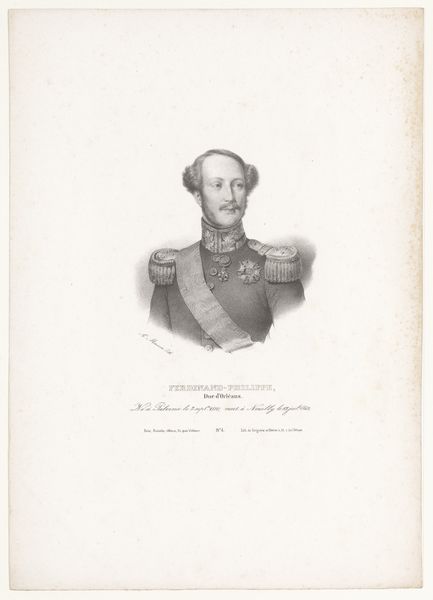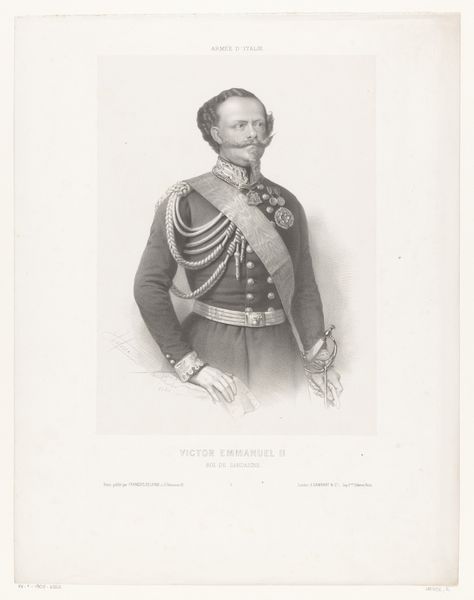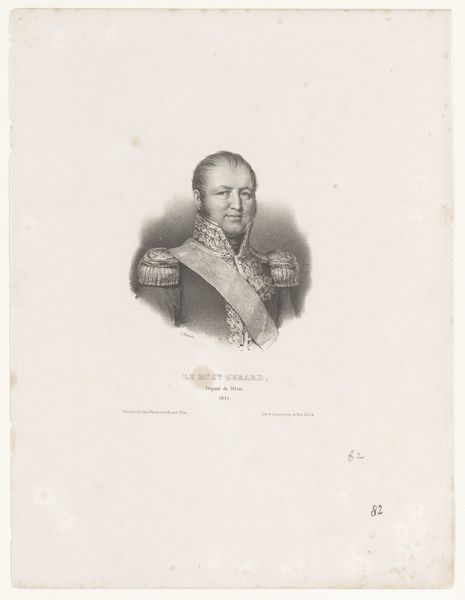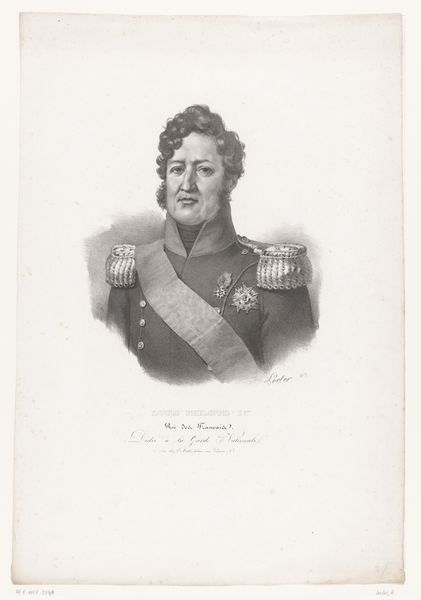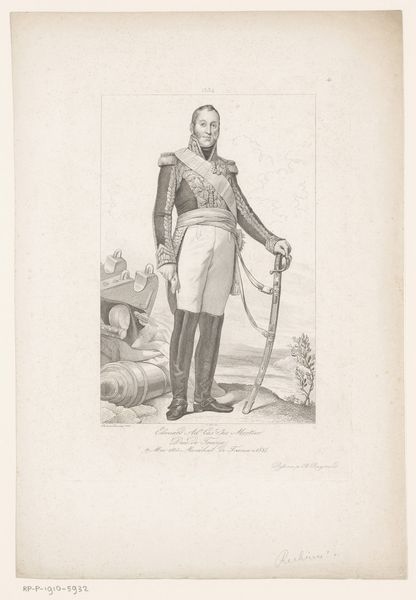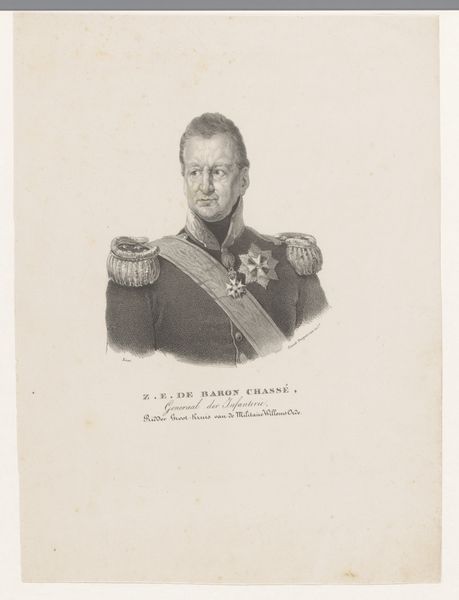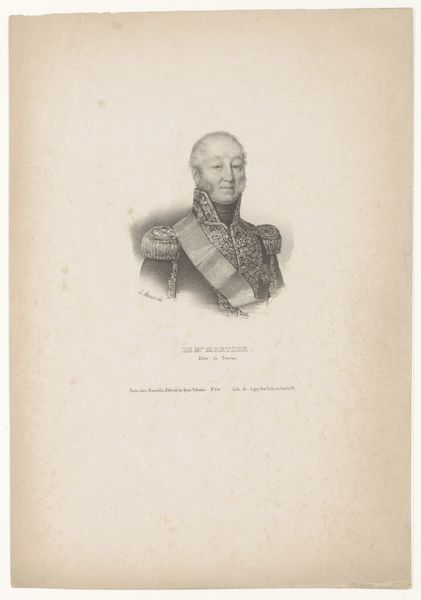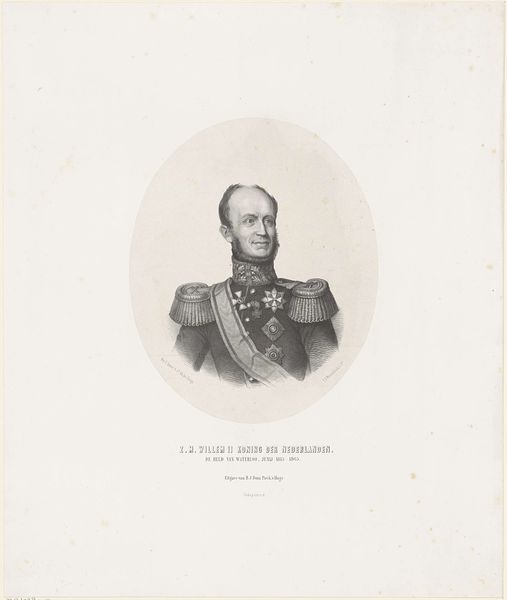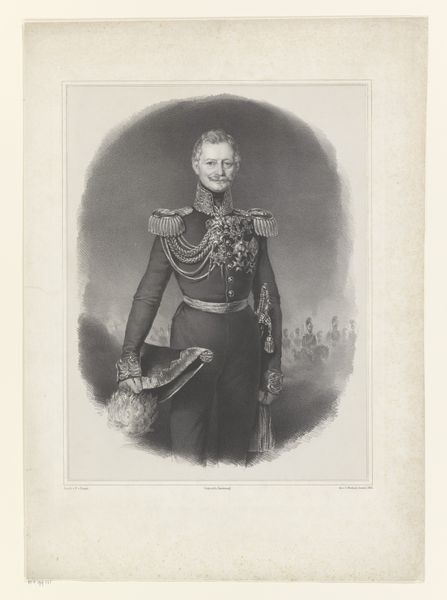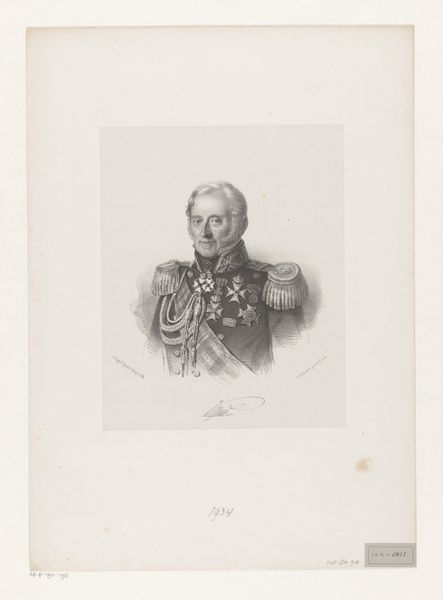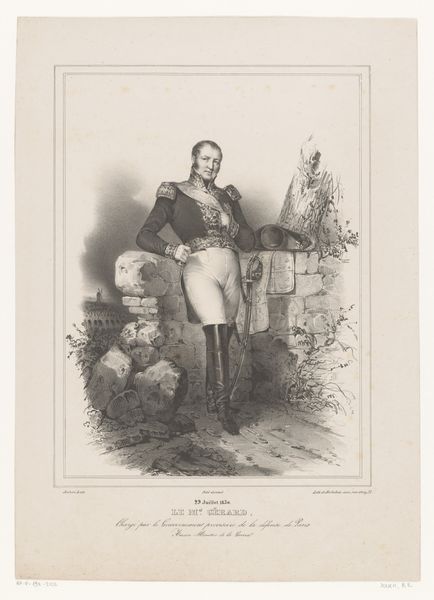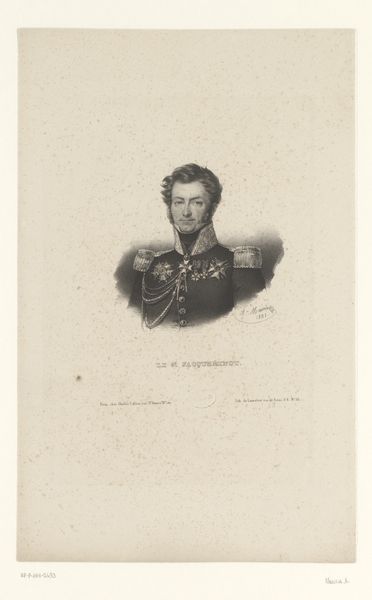
drawing, print, graphite
#
portrait
#
pencil drawn
#
drawing
# print
#
charcoal drawing
#
pencil drawing
#
graphite
#
history-painting
#
graphite
Dimensions: height 460 mm, width 305 mm
Copyright: Rijks Museum: Open Domain
Editor: Here we have Pieter Barbiers' "Portret van generaal David Hendrik baron Chassé", created sometime between 1808 and 1848. It's a print, using graphite and other drawing materials. The general looks very stern, quite imposing, almost... manufactured. What can you tell me about it? Curator: Manufactured is the perfect word. Note how printmaking, a reproducible medium, allows for widespread dissemination of this image of power. Consider the labor involved: the artist, the printmaker, and then the distribution networks, all contributing to the construction of General Chassé's image. This isn't just about likeness; it's about manufacturing consent. Look at the drawing at the bottom half too, depicting what seems like his active role on the battlefield. Do you notice the implication here? Editor: Yes, I do! It appears to be a miniature battle, a further propagation of military image and status! What I am wondering is why Barbiers chose graphite and print? Surely oil or paint would have had the grand, official quality to portray a Baron? Curator: Precisely! And isn't that decision telling? Oil painting, typically for the elite, would have been much more limiting in distribution. The use of print implies a democratizing effect, making his image accessible. However, consider the nuances here as well. The intended consumer of this portrait and the narrative created could point to deeper consumption issues within its own socio-political framework, and for whom was the artwork really created. Editor: So, in a way, it is carefully crafted propaganda? Highlighting both his importance and, perhaps, hinting at a more egalitarian accessibility, achieved through the means of production itself. Curator: Exactly. And by understanding those material choices, the printmaking process itself, and the context in which it was circulated, we understand far more than just what General Chassé looked like. Editor: I never thought of printmaking in terms of manufacturing consent before. Thanks! Curator: A pleasure. It's all about asking who benefits from the means of production, even in art.
Comments
No comments
Be the first to comment and join the conversation on the ultimate creative platform.
